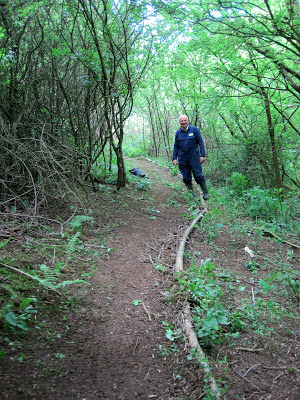Volunteers on our latest work party first of all set about improving the steps we built some months ago. Many feet had eroded much of the soil so we re-surfaced with some woodchip, kindly donated by Andy and Lucy England of England's Finest Gardens (garden landscaping & tree surgery)
Then we set about improving the camber on the path through the Valley Woodland. You can see in the photo below that there is a strong slope downhill, so we are fixing hazel poles on the downhill edge to stop you sliding down into the nettles - or even the stream below.
The poles are held in place by hazel stakes.
These are then nailed to the poles and sawn off flush.
We have made a good start and will be extending the path edging through the grassy bit and down past posts 10 & 11.


























